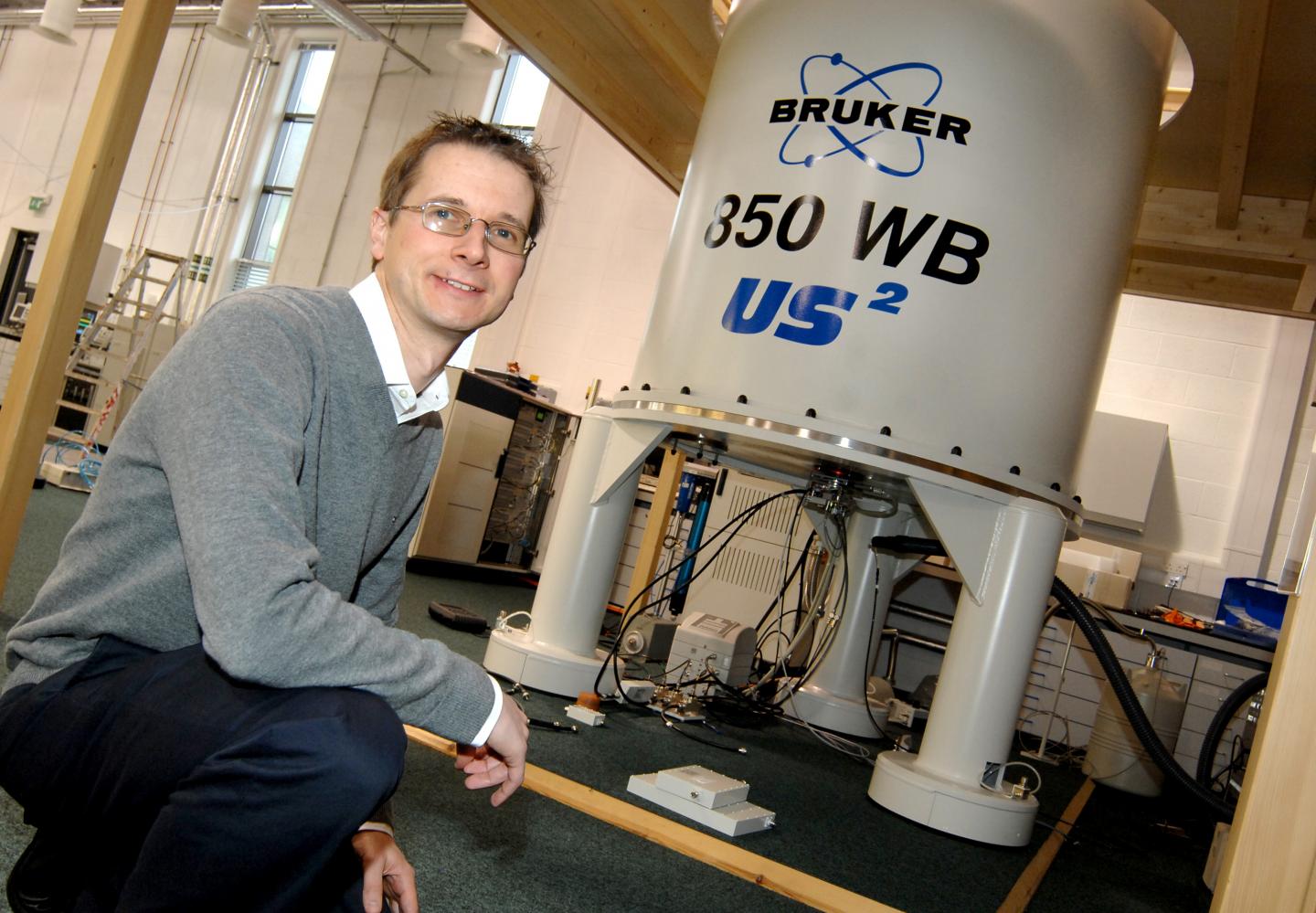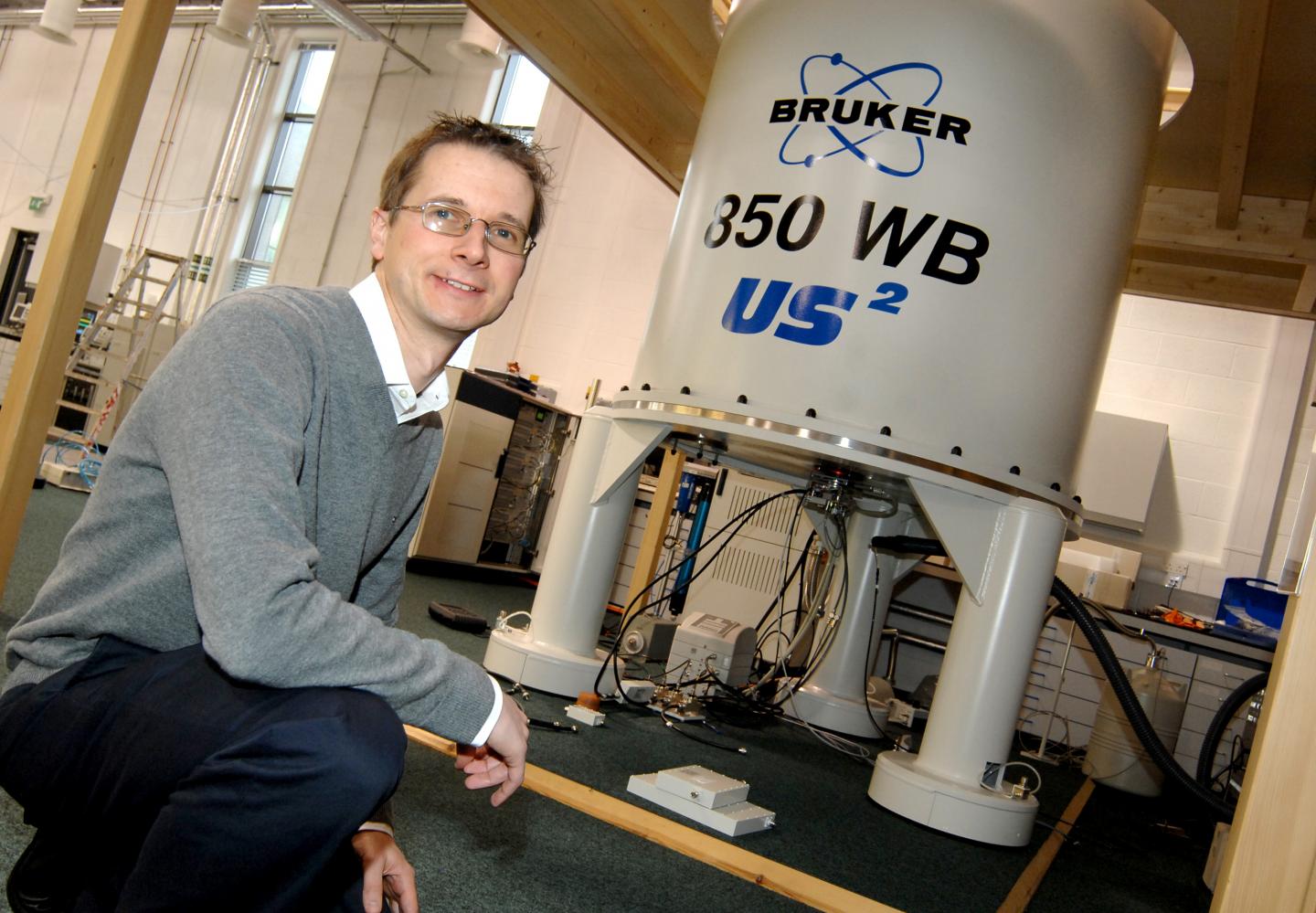
Credit: University of Warwick
- Cutting edge tech shows molecule self-assembling into different forms passing from solution state to solid state and back again – a curious phenomenon in science – says University of Warwick research
- Phenomenon discovered using state-of-the-art national solid-state NMR facility at Warwick
- Research published by Chemistry: A European Journal – designated as 'Very Important Paper'
Cutting edge technology has shown a molecule self-assembling into different forms when passing between solution state to solid state, and back again – a curious phenomenon in science – says research by the University of Warwick.
Professor Steven P. Brown from the Department of Physics, with colleagues in the Department of Chemistry, have identified that the supramolecular structure of a guanosine derivative can be different upon passing from the solid state into the solution state and vice versa.
This defies chemical precedent, as self-assembled structures driven by the formation of specific intermolecular hydrogen bonds in solution would be expected to remain the same in the solid state.
The phenomenon was revealed by the state-of-the-art nuclear magnetic resonance (NMR) facility at Warwick.
In solution state, the guanosine derivative analysed by the researchers is constituted by quartet-like molecular structure – and scientific intuition would suggests that this should remain like this in the solid state.
However, upon changing into the solid state, the supramolecular assembly surprisingly contains both quartet and ribbon structures.
Professor Brown and his colleagues made this discovery using advanced NMR spectroscopy technology, which measures the magnetic response of nuclei at the centre of atoms.
The researchers identified the distinct supramolecular states by spotting varying peaks in spectra that identify close approach of these magnetic nuclei in atoms.
Professor Brown comments:
"Access to state-of-the-art NMR infrastructure has enabled us to see with chemical precision how the guanosine-based molecules self-assemble, thus revealing the surprising phenomenon of a change in self-assembly upon going changing from solution to solid and from solid to solution."
###
The University of Warwick's national solid-state NMR facility is directed by Professor Brown and a Facility Executive with scientists from 4 other UK universities – and was officially launched in 2010. The facility and this research is funded by the Engineering and Physical Sciences Research Council.
The research, 'Co-existence of Distinct Supramolecular Assemblies in Solution and in the Solid State', is published in Chemistry: A European Journal – and is designated a Very Important Paper.
Professor Brown collaborated with researchers in Italy and the U.S.A.
Media Contact
Luke Walton
[email protected]
44-782-454-0863
@warwicknewsroom
http://www.warwick.ac.uk
############
Story Source: Materials provided by Scienmag





